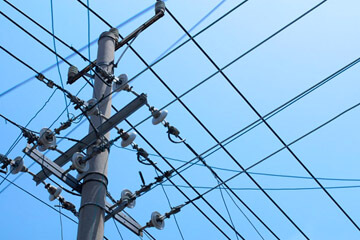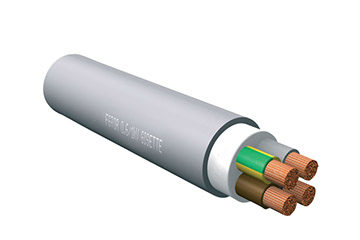A simple way to remove moisture for overhead cables
Rubber-plastic overhead cables cause moisture and moisture to penetrate into the conductor due to various reasons, reducing the insulation strength, causing leakage or short-circuit accidents, seriously threatening personal safety and affecting production. For rubber-plastic cables with moisture and moisture intruding into the conductor, in order to ensure good insulation performance, moisture removal treatment is required. The methods for handling damp cables are now introduced as follows for reference:
Current drying method:
The current drying method is to pass a certain electric current to the cable that needs to be damp removed (when the insulation resistance is low and there is no obvious water mark), and then evaporate the moisture and water inside the cable. The processing steps are as follows.
Perform visual inspection and insulation resistance measurement of damp cables. Check the damp cable and measure the insulation resistance before drying. When the insulation resistance is lower than the specified value, a detailed record should be made. If there is a short-circuit to ground fault, find out the fault point, and then perform drying treatment after troubleshooting.
(2) Wiring of current drying method. For a three-phase three (four) wire cable, short-circuit at one end of the cable, and divide the conductor into two groups at the other end. One group has 1 (2) cores and the other group has 2 cores, which are short-circuited and then connected. Install an ammeter in the circuit on the outgoing line of the current booster or electric welding machine (when the range of the ammeter is not enough, a current transformer can be used to measure it) for current monitoring of the circuit.
When the current is initially passed, the current is controlled below 1.15 times the long-term allowable working current of the cable, and the temperature of the cable core and the cable surface must be strictly monitored with a far-infrared thermometer (or thermometer). When the temperature reaches 55°C, reduce the current and control it within 1.0 times the value of the long-term allowable working current. Dry in this way for 5-6 hours, and then test the insulation resistance of the cable. When the insulation resistance cannot meet the requirements, continue to dry until the insulation resistance meets the requirements, and then perform other electrical index measurements on the cable. It should be pointed out that during the entire drying process, the temperature of the cable conductor and the cable skin should be strictly monitored, and the temperature value in Table 1 should not be exceeded. In addition, the joint part must be connected firmly, otherwise it will cause the joint part to overheat, which will easily lead to misleading temperature monitoring and poor results.
2. On-site vacuum drying method
When the power cable is heavily damp and has obvious water marks (the oil filter paper used for drying has obvious wet marks on the surface of the cable core wire), the current drying method is used for too long, then the on-site vacuum drying method can be used for treatment.
- Check the damp cable and measure the insulation resistance. Before drying, check the damp cable and test the insulation resistance. The on-site vacuum drying method is used only when there are obvious water marks in the visual inspection, and the current drying method can be visited for other steps.
- On-site vacuum drying equipment connection. Connect the cable to be dehumidified according to the method shown in Figure 2.
The method of removing moisture is to use alternate methods of vacuuming and pressurizing gas. First turn on the vacuum pump, and after vacuuming for 1h, stop the operation of the vacuum pump, and then pass the pressure nitrogen (or dry gas), and keep it under the pressure of 0.15Mpa for 1h. Repeat this 4 to 5 times until the vacuum is kept for 3 hours when there is no water drop in the vacuum bottle, and then the insulation resistance of the cable is measured. After the insulation resistance is qualified, the other electrical indicators of the abc cable for sale are measured.
3. Example A rubber-plastic cable with a voltage level of 6KV in a certain unit has experienced two cable damp faults in the past few years (the length of the faulty cable is up to 1.15km) after being dried by the above method, and the effect is good. See Table 2 for the handling of damp cables.

